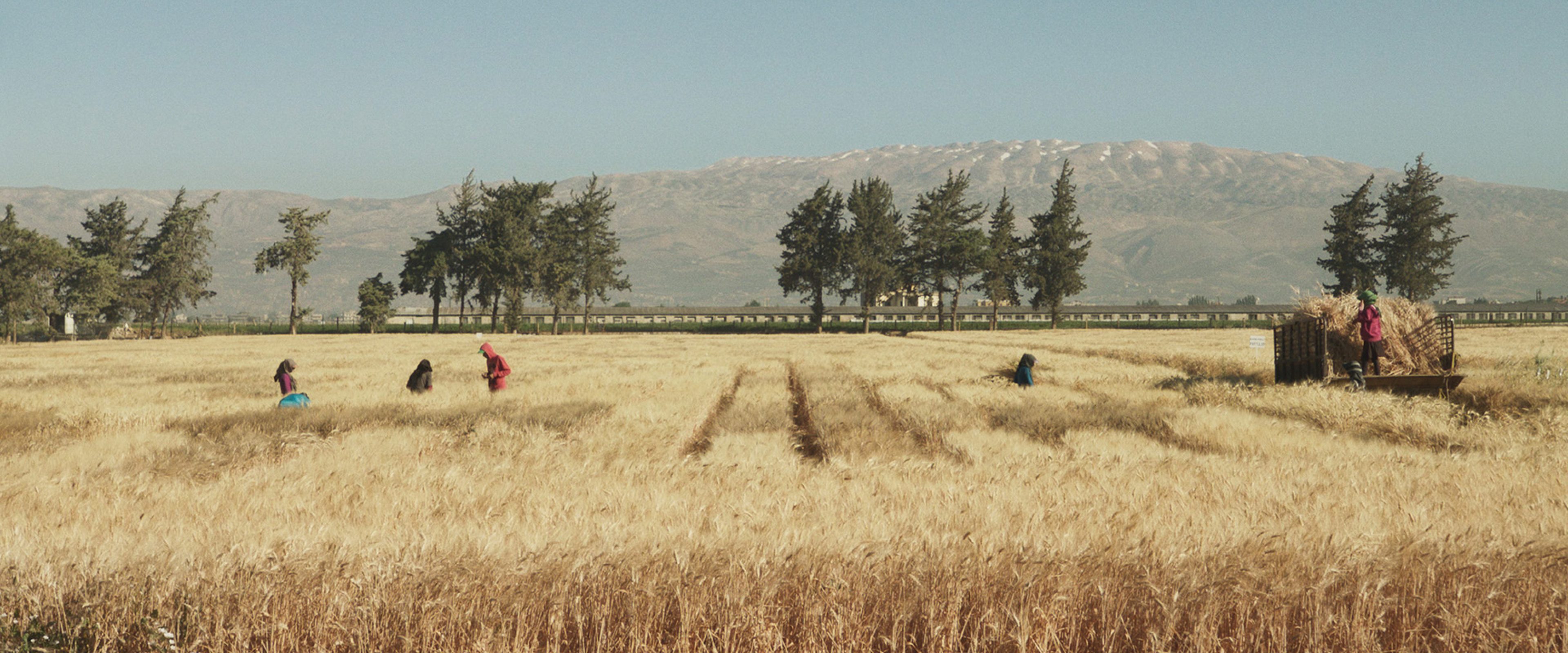When the Land Speaks is organized by the Eli and Edythe Broad Art Museum at Michigan State University and curated by Carla Acevedo-Yates and Steven L. Bridges, Associate Curators. Support for this exhibition is provided by the Alan and Rebecca Ross endowed exhibitions fund.
About the Exhibition
Jumana Manna works primarily in sculpture and film in order to investigate power structures, often focusing on the physical body and the abilities of diverse materials to signify meaning in relation to narratives around state building and specific geopolitical histories. Her most recent feature-length film, Wild Relatives, tells a nuanced and poetic story that develops out of major sociopolitical events sparked by the 2012 relocation of an international agricultural research center from Aleppo to Lebanon—the result of the Syrian Revolution turned war. In order to replenish the holdings of the new center in Lebanon, seeds were removed from the Svalbard Global Seed Vault, which is located deep beneath the permafrost in arctic Norway. The Svalbard Global Seed Vault is often called the “doomsday vault,” as it stores the most comprehensive collection of seed varietals from all over the world. As the seeds journey from the Arctic to Lebanon, a series of encounters unfold to describe a matrix of human and nonhuman lives. The meditative pace created by the artist patiently teases out tensions between the state and individuals, and industrial and organic approaches to seed storing, as well as climate change and the ongoing planetary decline in biodiversity.
When the Land Speaks
This program presents the work of artists who explore the land as a space of conflict, which speaks through a changing, often fractured landscape. Addressing current issues such as resource extraction, sustainability, land rights, and displacement and dispossession, the works in this video series approach language as a form that does not limit itself to verbal communication. Instead, enunciation takes place in and through the territory: in the sounds and forms that water takes, in the rumbles and cracks of the earth, and in the ancestral rituals and practices derived from the landscape. In many ways, land and language have always been interconnected, each helping to define the other. But in our present day, there is a growing disconnect between much of human society and any sense of rootedness or care for the land that supports us. Confronting these realities, the artists in this series draw attention to the power of the landscape to express itself and communicate with us, and reflect on how our eroding connection to the land may also represent a fading understanding of ourselves.
